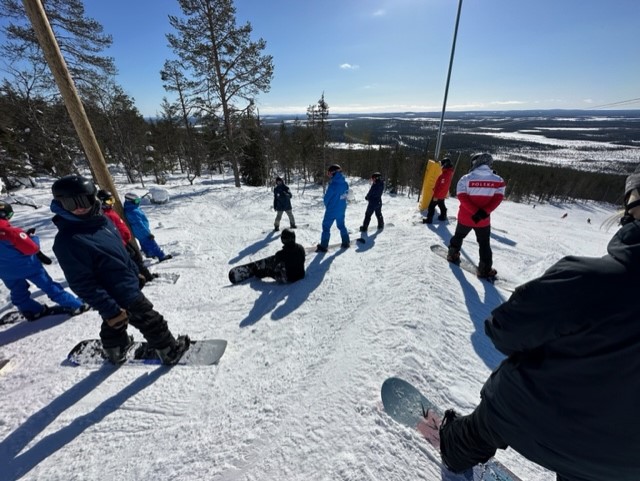The Germans presented a half-indoor, half-outdoor session covering their Snowboard Compass tool. (Sorry team, the link to the image is broken and I can’t find it while googling). They have a circular image with Slope, Race, Offpiste and Park on the edges; there’s another layer that further breaks these domains down, with things like SBX, Halfpipe, Groundtricks, etc…
The tool is designed to encourage instructors to think broadly about snowboarding and to remember to incorporate as many disciplines as possible into every lesson. On courses they go further and train their instructors to use the tool to view and select varying terrain. In the session I found the compass to be a good way to remind myself of types of riding I don’t often think about (like half-pipe) and how to view the terrain (not a half-pipe) with a more open and creative eye.
This feels very similar to how we encourage an open and global teaching approach in our own system. Good lessons aren’t limited to just one task or type of riding and often the cross-training of kinds of riding actually creates more improvement than not.


